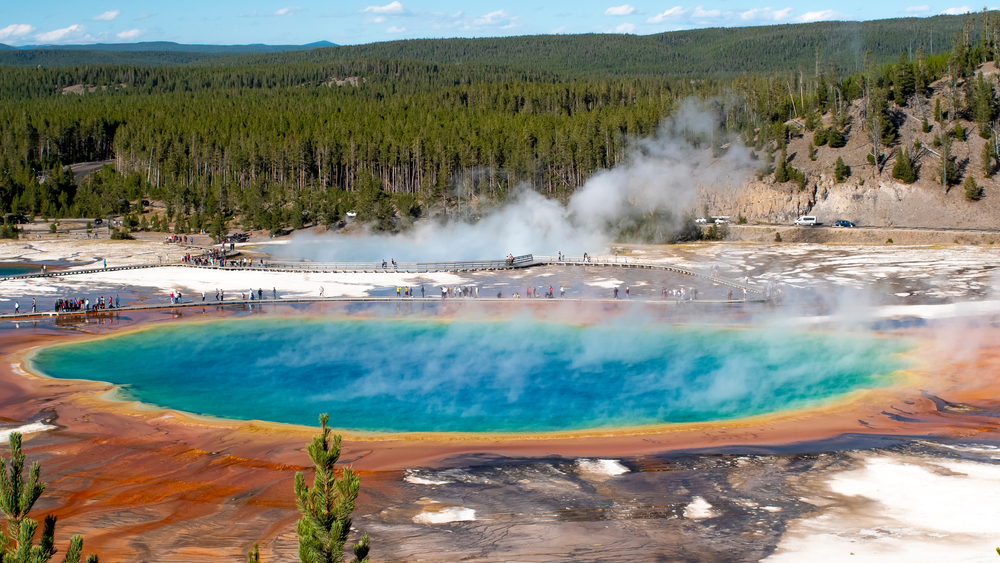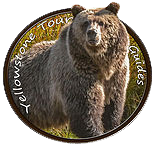A Guide to Yellowstone’s Geothermal Features

Yellowstone National Park, nestled primarily in the state of Wyoming, is renowned worldwide for its spectacular geothermal features. From erupting geysers to colorful hot springs and bubbling mud pots, Yellowstone offers visitors a glimpse into the dynamic forces shaping our planet’s surface. This guide explores some of the park’s most famous geothermal attractions, providing insights into their formation, significance, and visitor experience.
Yellowstone’s Geothermal Environment
Geothermal Features Defined
Yellowstone’s geothermal features are a result of the park’s location atop one of the world’s largest active volcanic systems. The magma chamber beneath the surface heats groundwater, creating a variety of hydrothermal features. These include geysers, hot springs, mud pots, and fumaroles.
Geological Origins
The park sits on the Yellowstone Caldera, a volcanic hotspot that last erupted over 640,000 years ago. The ongoing volcanic activity provides the heat necessary for the geothermal features to thrive.
Unique Ecosystems
Despite the extreme conditions, Yellowstone’s geothermal areas host unique microbial life adapted to the hot and acidic environments. These microorganisms create vibrant colors that adorn many of the hot springs.
Famous Geothermal Attractions in Yellowstone
Old Faithful Geyser
Perhaps the most famous geyser in the world, Old Faithful erupts approximately every 90 minutes, shooting hot water up to 180 feet in the air. Its predictable schedule and impressive displays make it a must-see for park visitors.
Grand Prismatic Spring
Located in the Midway Geyser Basin, the Grand Prismatic Spring is the largest hot spring in the United States and one of Yellowstone’s most photographed features. Its strikingly vibrant colors, caused by pigmented bacteria, create a mesmerizing sight against the backdrop of surrounding pools and geysers.
Norris Geyser Basin
Known for its dynamic landscape and high-temperature geysers, Norris Geyser Basin is one of the hottest and most active thermal areas in Yellowstone. Visitors can explore boardwalks that wind through steaming vents, geysers, and colorful hot springs.
Mammoth Hot Springs
Located near Yellowstone’s North Entrance, Mammoth Hot Springs features terraces of travertine formed by hot water flowing through limestone. The constantly changing terraces create a surreal landscape of cascading mineral deposits and vivid pools.
Fountain Paint Pot
Fountain Paint Pot in the Lower Geyser Basin offers a diverse display of Yellowstone’s geothermal activity. Visitors can witness bubbling mud pots, colorful hot springs, and occasionally, small geysers erupting in this compact and accessible thermal area.
Visiting Yellowstone’s Geothermal Areas
Visitor Guidelines
When visiting Yellowstone’s geothermal areas, it’s crucial to adhere to park guidelines for safety and preservation. Stay on designated boardwalks and trails to protect yourself and delicate thermal formations. The ground surrounding these features can be unstable and dangerously hot.
Best Times to Visit
To experience Yellowstone’s geothermal features at their best, plan your visit during the cooler parts of the day, such as early morning or late afternoon. During these times, steam is more visible, and the lighting enhances the vibrant colors of the hot springs.
Accessibility
Most of Yellowstone’s major geothermal areas are accessible via well-maintained boardwalks and trails. However, some features may require moderate walking or hiking, so be prepared with comfortable footwear and plenty of water.
Conservation and Preservation Efforts
Protecting Yellowstone’s Geothermal Features
Yellowstone National Park prioritizes conservation efforts to protect its delicate geothermal features. These include monitoring water levels, managing visitor access, and conducting research on the park’s unique microbial life.
Educational Programs
The park offers educational programs and guided tours focused on geothermal features. These programs provide insights into the geological processes at work and the ecological significance of Yellowstone’s thermal areas.
Conclusion
Yellowstone’s geothermal features offer a window into the Earth’s geologic past and ongoing processes. From the iconic eruptions of Old Faithful to the vibrant colors of Grand Prismatic Spring, each feature tells a story of volcanic activity and adaptation. Visitors to Yellowstone National Park can explore these wonders while contributing to conservation efforts that ensure these natural marvels endure for future generations to enjoy.
Need Some Guided Tours Of Yellowstone National Park?
Welcome to Yellowstone Tour Guides! We here at Yellowstone Tour Guides are a family-owned tour agency that specializes in tours, sightseeing, and hikes throughout Yellowstone and Big Sky, Montana! Since 2001, we have been dedicated to showing families the beauty of Yellowstone Nation Park. We offer small-group sightseeing tours, multi-day backpacking, and hiking tours. We also provide private vacation planning and tours! We look forward to exploring Yellowstone with you! Call us today!
